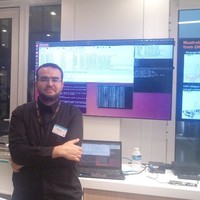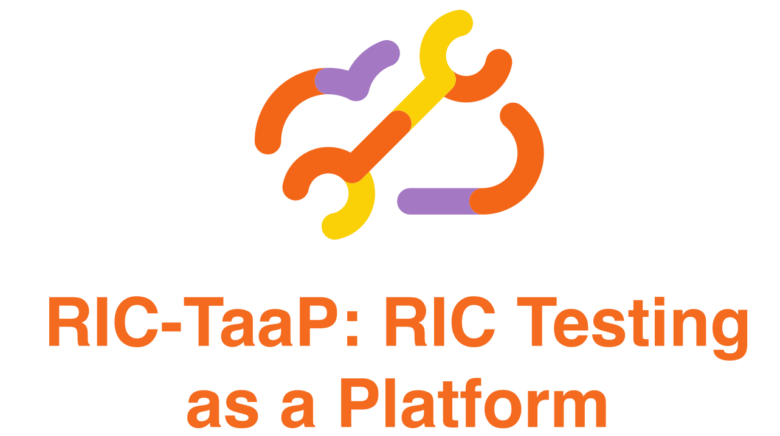• Their newest RAN innovation, an accessible and reliable testing platform, fosters collaborative innovation and helps fully realize the promise of Open RAN.
• RIC Testing as a Platform relies on both a digital twin and AI.
The Open Radio Access Network ( ) represents a paradigm shift in the way mobile networks are built and operated. Traditionally, Radio Access Network (RAN) architectures were dominated by proprietary solutions. Today, this model, now ready for large-scale deployment, is evolving toward openness, standardization, and enhanced interoperability, the principles promoted by the industry group O-RAN Alliance.
In this context, (C-SON), a staple of modern telecommunication networks, have become less relevant due to challenges with multi-vendor compatibility and limited openness to third-party integration.
This gap has been addressed by the introduction of the RAN Intelligent Controller (RIC) — a key architectural component designed to enable multivendor interoperability through xApps (for near-real-time optimization and automation) and rApps (for non-real-time optimization and automation). The RIC fosters innovation across a broad ecosystem, including startups, academia, SMEs, and research institutions.
RIC Testing as a Platform emerges as a fantastic opportunity for third parties to ensure a successful RIC deployment in a heterogeneous ecosystem.
The innovation challenge, for network operators faced with third-party development of , is to ensure a successful RIC deployment in a very heterogeneous ecosystem including legacy networks and C-SON platforms which are vendor-specific and closed to third parties. However, renowned RIC testing environments, often provided by established vendors, are costly and closed. This creates a major hurdle for third parties who wish to contribute to new applications. Without accessible testing environments that are affordable, efficient and truly support interoperability, even the most promising optimization algorithms or energy-saving applications remain untested and dormant.
Fostering innovation with accessible and affordable RIC Testing
To address this need and provide opportunities to third parties, Orange developing an open-source, free RIC testing platform. It addresses three major challenges: accessibility of testing environments, slow development-to-deployment cycles, and the integration of AI with reliable automation. “The goal”, explain Mina Yonan, Principal R&D Engineer, and Ahmed ElSanhoury, Lead of IoT Engineering, Orange Egypt innovation experts, “is to provide an ecosystem similar in spirit to the App Store — where developers will be able to deploy, test, and refine their innovations using standardized interfaces. This platform brings together 10 open-source and operational tools and leverages configurations and KPIs from live networks to provide a realistic, validated environment.”
The RIC Testing as a Platform project is a step toward transforming the wireless network industry into a truly open ecosystem. By deleting the barriers to entry, shortening development cycles, and harnessing the power of AI, the platform empowers innovators and researchers to optimize energy consumption, reduce carbon footprints, or enable new applications for 5G and beyond. It offers the tools and first and foremost the collaborative ingredients to boost Open RAN innovation.
Let’s get technical: the method to speed up the steps through deployment
A digital twin. In legacy RAN systems, the development-to-deployment lifecycle is typically long and fragmented. Developing a C-SON module and deploying it in a live network often requires multiple stages including proof of concepts (PoCs), field trials, and vendor certifications which slow down innovation and discourage agile development.
The RIC Testing as a Platform initiative addresses this inertia by leveraging a digital twin. A digital twin replicates real-world network behavior, terrain, traffic, and configuration in a controlled, simulated environment. It uses actual network configurations such as cell locations and configuration, user traffic patterns, and channel conditions alongside open-source tools like SUMO (for traffic simulation) and Sionna RT (for deterministic channel modeling). Additionally, operational tools such as C-SON data from the Orange network contribute to creating a realistic and efficient testing framework.
Together, these components enable the accurate emulation of real-world scenarios, empowering developers to test and validate their xApp/rApp design with confidence. Calibration is key: by aligning simulation KPIs with those observed in live networks, developers can trust that their tests reflect real-world behavior. Furthermore, using orchestration frameworks, configurations from operational networks can be dynamically loaded into the simulation. This enables developers to write and test xApps/rApps under near-identical conditions to those in live deployments, significantly reducing development time.
A practical example is the implementation of an energy-saving xApp that dynamically deactivates underutilized cells based on real-time traffic and quality-of-service (QoS) indicators. Unlike the static cell-off schedules commonly used today such as switching off capacity cells from midnight to 6 AM this xApp autonomously triggers actions based on live utilization thresholds and user experience metrics.
Artificial Intelligence (AI). 50% of RAN incidents are related to operational resources, the resolution of which does not require advanced technical expertise. Automating interventions with the help of Artificial Intelligence (AI) seems to be an obvious solution. However, while AI is widely used in IT and software fields, its integration into RAN environments calls for caution—primarily due to concerns about reliability and hallucination risks.
To explore the potential of AI in RAN, the platform incorporates an innovative AI agent based on Retrieval-Augmented Generation (RAG). This agent—referred to as the Flex-RIC Agent—interfaces with a rich dataset of Open RAN specifications and standardization documents and RIC implantation codebase. Instead of relying on generic responses from large language models (LLM), this agent retrieves precise information from embedded datasets, reducing hallucination and improving trust.
Prompt engineering is used to specify use cases. For instance, a developer can type a query request to build an xApp for energy saving and specify the detailed requirements, and the agent will autonomously retrieve relevant specifications, write standardized code, and load the configuration into the simulation environment. The aim is not just automation, but also democratization— lowering the barrier for non-RAN experts to contribute to RAN optimization in the future.
Eventually, with sufficient feedback and refinement, these AI agents could handle tasks from fault detection and alarm management to full lifecycle xApp development. They would monitor the network 24/7, respond autonomously to network conditions, and engage humans only for critical decisions, ushering in a new era of intelligent, self-optimizing networks.
Open Radio Access Network disaggregates and opens up the RAN to improve flexibility and interoperability in mobile network deployment. RAN hardware and software are cloudified/virtualized and include intelligent management.
Centralized Self-Organizing Networks
A telecommunications network where the components self-organize to operate optimally, under the supervision of a central control. This allows for a smarter, more adaptable, and easier-to-manage network.
These 2 applications sit on the RIC (RAN Intelligent Controller) to enable network automation. xApps are designed for near-real-time (Near-RT) operations, requiring very quick response times, less than 1 second. rApps operate in non-real-time (non-RT) environments, managing tasks with response times above 1 second.
 Mina Yonan
Mina Yonan
 Ahmed ElSanhoury
Ahmed ElSanhoury












